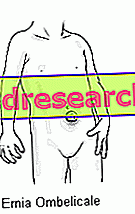What is that
Carboxytherapy is a technique widely used in medicine, which consists of the subcutaneous administration of a certain quantity of carbon dioxide in the gaseous state.

Carboxytherapy is much appreciated, not only for the results that can be obtained, but also because the carbon dioxide given is a natural substance, not dangerous, non-toxic at low concentrations and hypoallergenic.
History
History of Carboxytherapy
The use of carbon dioxide for the treatment of disorders and diseases is by no means recent. The therapeutic use of this gas, in fact, has its roots in 1932 at the thermal station of Royat in France, where patients were subjected to treatments based on carbon dioxide to counter vascular disorders of different nature.
Over the years, the number of patients treated at this spa has gradually increased, reaching impressive levels. Research conducted at the Royat spa center has shown that the administration of carbon dioxide to patients with peripheral arterial disease of various kinds was able to lead to decidedly positive and encouraging results, especially in terms of functional recovery.
These results led the French Ministry of Health to consider this therapy not only effective, but also safe to use.
However, at that time there was still no talk of carboxytherapy. This term, in fact, was introduced for the first time by Luigi Parassoni during the XVI National Congress of Aesthetic Medicine of the Italian Society of Aesthetic Medicine.
Over time, carboxytherapy has attracted increasing interest, which has led it to be the subject of numerous research and clinical studies that are still conducted today.
Currently, carboxytherapy is a medical technique practiced in the United States, Japan, South Korea, in several South American countries and in several European countries. In Italy, there is the Italian Carboxytherapy company based in Milan since 1993.
Indications
What is Carboxy Therapy used for?
Carboxytherapy is used in many branches of medicine, such as:
- Dermatology;
- Aesthetic medicine (antiaging, regenerative and reconstructive);
- Vascular medicine;
- Gynecology.
More in detail, carboxytherapy is useful in the treatment of:
- Venous and lymphatic insufficiencies;
- Disorders characterized by an alteration of the microcirculation;
- Leg ulcers;
- Psoriasis;
- Skin aging (as an adjuvant treatment);
- Localized cellulite and adiposity;
- Stretch marks;
- Hypertrophic scars;
- Alopecia;
- Raynaud's phenomenon.
Furthermore, carboxytherapy can be used in the gynecological field as an adjunct in the anti-aging treatments of female genitalia.
Action mechanism
How does carboxytherapy work?
Carboxytherapy is useful in the treatment of all those disorders characterized by alterations of the microcirculation, on which, just the carbon dioxide is able to exert beneficial effects.
Indeed, following its subcutaneous administration, carbon dioxide is able to increase local blood flow by:
- The increase in arteriolar and metarteriolar sphygmicity, ie the increase in dilation and retraction of the elastic walls of arterioles and metarterioles, which favors the thrust of blood from the blood flow to the microcirculation.
- The relaxation of smooth muscle cells present in the precapillary sphincters.
The effects of carbon dioxide, however, do not end there. In fact, this gas also acts at the level of adipose tissue, where it is also able to:
- Induce the activation of a cascade of signals that culminates with the stimulation of intradipocyte lipase activity, the enzyme that hydrolyzes the triglycerides present in the adipocytes leading to the formation of fatty acids and glycerol;
- Increase the local oxygen concentration by increasing the Bohr effect (effect in which hemoglobin releases oxygen molecules in response to a local decrease in pH and an increase in the local concentration of carbon dioxide) . The increase in oxygen release favors the catabolic processes of oxidation of fatty acids, for which the presence of this gas is fundamental.
After completing these numerous functions following its injection, carbon dioxide is removed from the body by the endogenous elimination mechanisms that are also used in physiological conditions.
How it is performed
How is a carboxy therapy session performed?
Naturally, since it is a medical treatment in all respects, carboxytherapy must be carried out only by doctors specialized in the field.
The administration of carbon dioxide in the subcutaneous tissue takes place by means of very thin needles (disposable and sterile), which are connected by sterile tubes to a special device that supplies the gas; this appliance is equipped with a reservoir, inside which sterile carbon dioxide is contained, and a flowmeter that regulates the leakage. The rate at which carbon dioxide escapes and the amount of gas injected must be established by the doctor.
Is carboxytherapy painful?
Generally speaking, carboxytherapy is not a painful treatment, but the perception of pain is strongly influenced by factors such as the site of administration and the patient's sensitivity. Therefore, in case of need, before proceeding with the injections, the doctor can apply a local anesthetic in correspondence of the areas that must be treated.
How long does it last?
The duration of a single session can vary from 15 to 30 minutes, depending on the type of disorder that must be treated and its severity. To obtain appreciable results, however, a single carboxytherapy session is not sufficient, but it is necessary to perform therapeutic cycles composed of several sessions.
A therapeutic cycle can consist of a minimum of 2-6 sessions up to a maximum of 15-20 sessions. The interval between one session and another, as well as the number of sessions to be performed depend both on the type of pathology / blemish to be treated and on the patient's response to the same treatment.
At the end of the session, it is generally possible to resume all normal daily activities. In any case, it will be the duty of the doctor to provide adequate information in this regard.
Side effects
Although carbon dioxide is an absolutely safe gas when used in therapeutic dosages, carboxytherapy can still cause some side effects. Fortunately, in most cases, these effects are mild and tend to self-cancel within a short time. However, among the main secondary effects that can occur during, or at the end of, the carboxytherapy session, we find:
- Pain during treatment;
- Feeling of discomfort when the gas is injected subcutaneously;
- Sensation of skin soreness;
- Appearance of small bruises at the injection sites.
More severe side effects may occur if excessive doses of carbon dioxide are administered and / or if the technique is performed incorrectly. The risk of serious adverse effects is however minimal if one turns to medical professionals in the sector.
Contraindications
Although carboxytherapy is considered an effective and safe technique to use, it has many contraindications.
The use of this type of treatment, in fact, is contraindicated in the event of:
- Chronic respiratory failure;
- Renal and hepatic insufficiency (carbon dioxide is in fact eliminated mainly through kidneys and liver, and a dysfunction of these organs could lead to the appearance of serious side effects);
- Cardiac disorders and heart failure;
- Diabetes;
- Severe anemia;
- Treatments in progress with carbonic anhydrase inhibitors;
- Pregnancy.
Therefore, before undergoing a carboxytherapy session, it is necessary to carry out a preliminary examination by the doctor in order to exclude the presence of any contraindications or potential risks for the patient.



